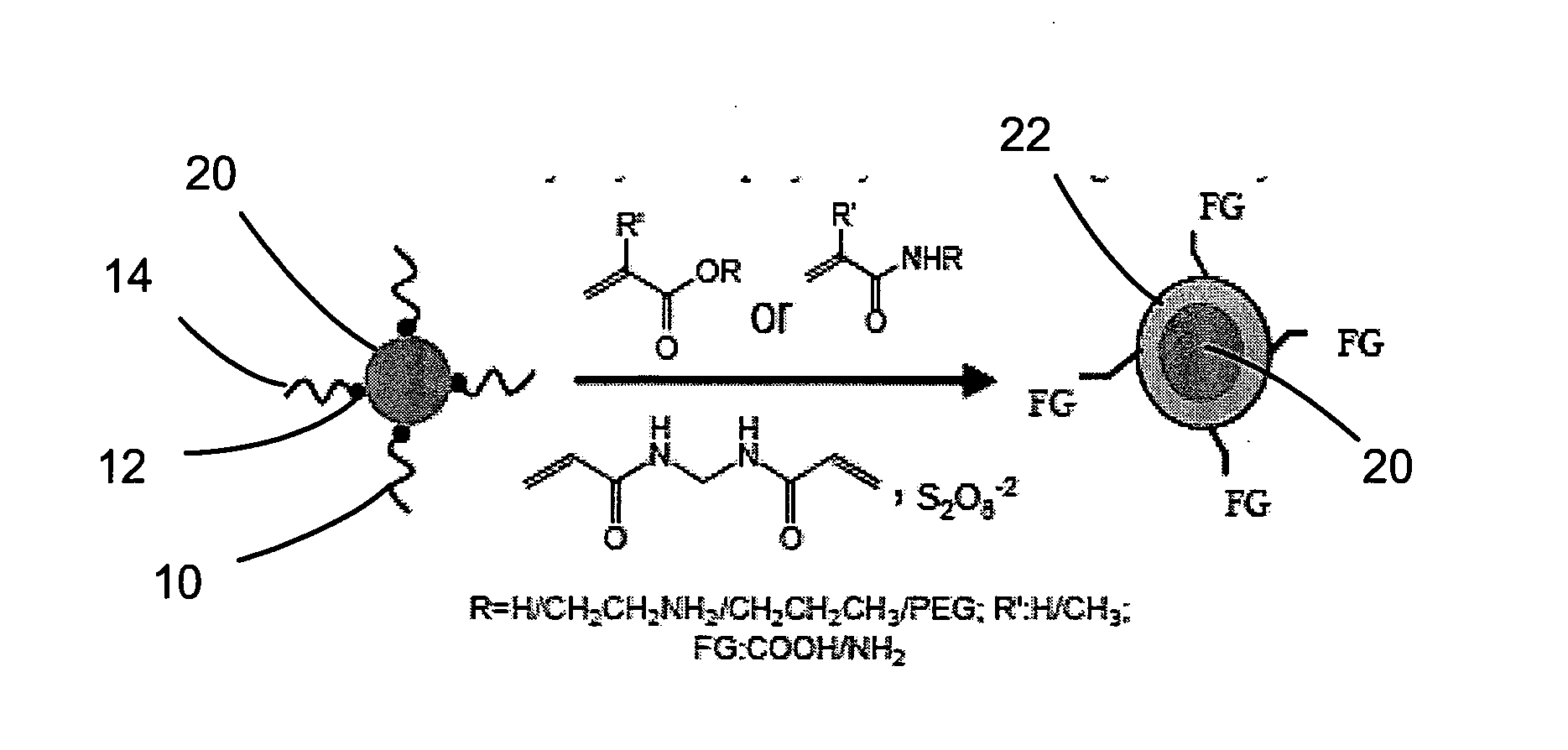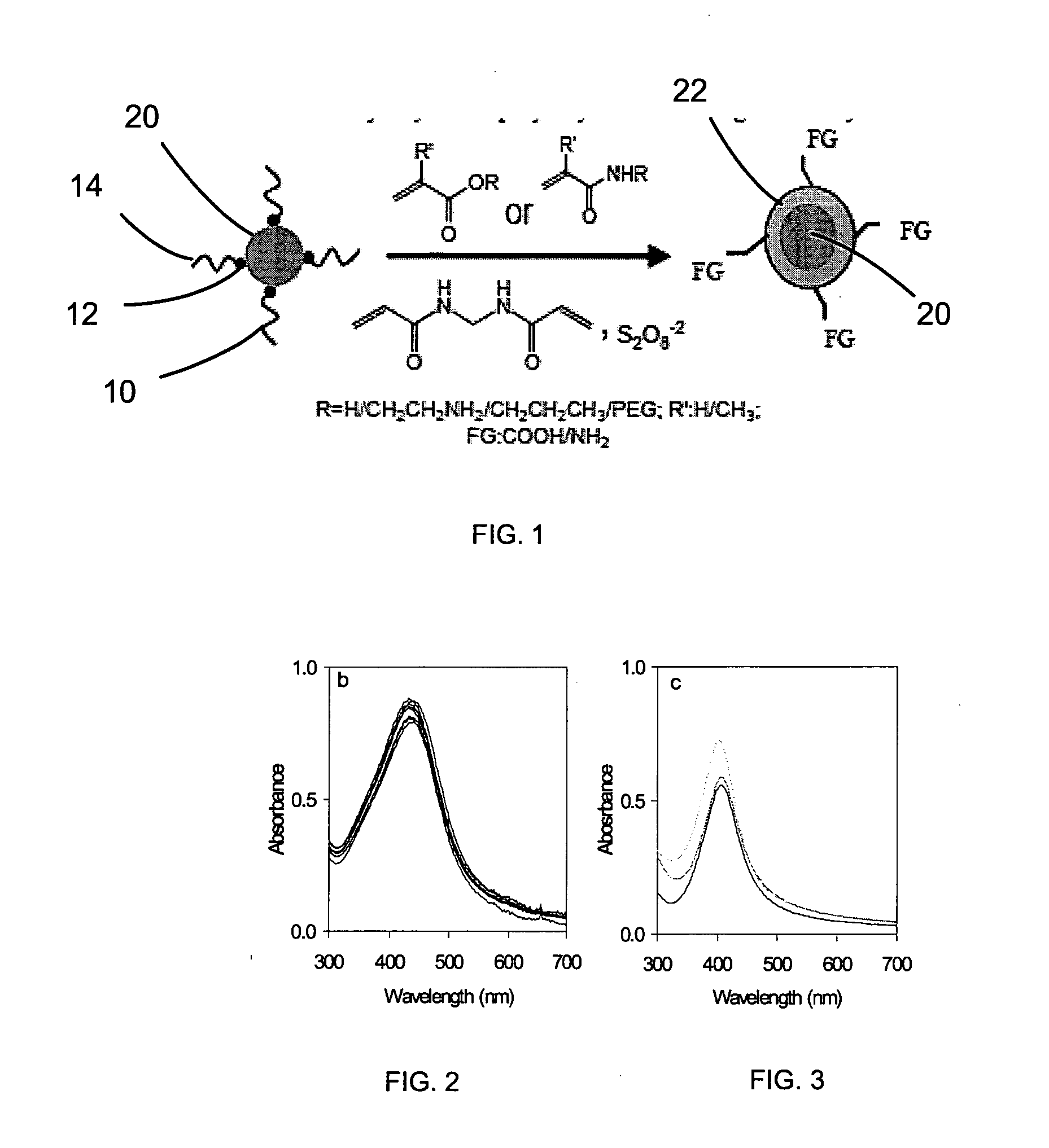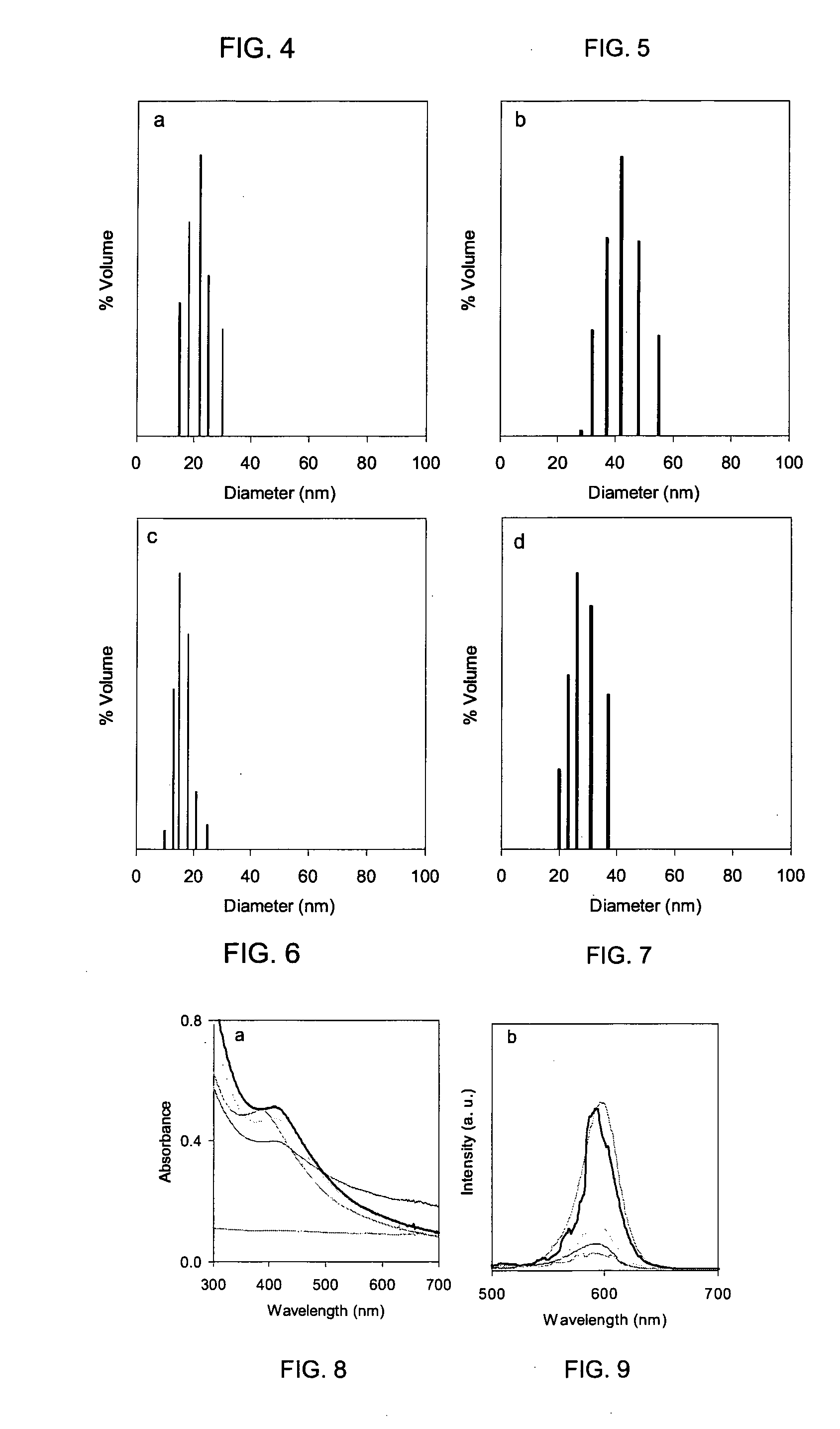Polymerization on particle surface with reverse micelle
a technology of reverse micelle and particle surface, which is applied in the direction of coating, nanotechnology, liquid surface applicators, etc., can solve the problems of limited application of nanoparticles, and insoluble hydrophobic particles in water
- Summary
- Abstract
- Description
- Claims
- Application Information
AI Technical Summary
Benefits of technology
Problems solved by technology
Method used
Image
Examples
examples
[0059]The materials used in the Examples were obtained as follows, unless otherwise specified, where the company names enclosed in parentheses are the provider of the corresponding chemical.
[0060]Tween 80, oleic acid, 4-(N-maleimidomethyl)cyclohexane-1-carboxylic acid 3-sulfo-N-hydroxysuccinimide ester (MAL-cyclohex-NHS), and biotinamidocaproate N-hydroxysuccinimide ester (NHS-biotin) were obtained from Sigma™.
[0061]2-aminoethyl methacrylate hydrochloride, and ethylene glycol methyl ether methacrylate were obtained from Aldrich™.
[0062]N-(3-aminopropyl)methacrylamide hydrochloride, and poly(ethylene glycol) monomethacrylate, were obtained from Polysciences™.
[0063]N,N′-methylenebisacrylamide, ammonium persulfate, N,N,N′,N′-tetramethyl ethylene diamine, were obtained from Alfa Aesar™.
[0064]TAT peptide with terminal cysteine group (95% purity) was obtained from GenScript™.
[0065]Each of the above chemicals were used as-received without further purification.
[0066]The following instruments...
example i
Synthesis of Nanoparticles
[0075]Near-monodisperse Ag nanoparticles with diameters of about 3 to about 4 nm were prepared in toluene using oleic acid as particle stabilizer.
[0076]Near-monodisperse Fe3O4 nanoparticles with diameters of about 4 to about 15 nm were prepared by high-temperature pyrolysis of Fe(II) carboxylate salt in octadecene.
[0077]CdSe was prepared by high-temperature pyrolysis of carboxylate precursors of Cd in octadecene. CdSe nanoparticles were purified from free ligands, and capped by ZnS shell at 200° C. in octadecene via the alternate injection of Zn stearate in octadecene and elemental S dissolved in octadecene.
[0078]The particles were purified from free ligands using a standard precipitation-redispersion procedure.
example ii
Coating Particles with Polymer within Reverse Micelles
[0079]The nanoparticles prepared in Example I were introduced into Igepal-cyclohexane reverse micelle solutions and coated with polymer as follows.
[0080]The hydrophobic nanoparticles were introduced to 10 mL of an Igepal-cyclohexane reverse micelle solution (1 mL of Igepal in 9 mL of cyclohexane). The particle concentration was adjusted using the absorbance value at the first absorption peak for ZnS-CdSe, the plasmon absorbance value at 410 nm for Ag, and the absorbance value at 400 nm for Fe3O4 using an optical path length of 1 cm. The absorbance was about 0.3 to about 0.5 for ZnS-CdSe, about 1.0 to about 2.0 for Ag, and about 0.5 to 1.0 for Fe3O4. In two separate vials, about 0.2 mM of acrylic monomers or their mixture (dissolved in 100 μL of water) and 0.01 to 0.2 mM of methylenebisacrylamide (dissolved in 200 μL of water by 10 min of sonication) were prepared and mixed with the nanoparticle solution. Next, 50 μL of tetramethy...
PUM
| Property | Measurement | Unit |
|---|---|---|
| temperature | aaaaa | aaaaa |
| diameter | aaaaa | aaaaa |
| diameter | aaaaa | aaaaa |
Abstract
Description
Claims
Application Information
 Login to View More
Login to View More - R&D
- Intellectual Property
- Life Sciences
- Materials
- Tech Scout
- Unparalleled Data Quality
- Higher Quality Content
- 60% Fewer Hallucinations
Browse by: Latest US Patents, China's latest patents, Technical Efficacy Thesaurus, Application Domain, Technology Topic, Popular Technical Reports.
© 2025 PatSnap. All rights reserved.Legal|Privacy policy|Modern Slavery Act Transparency Statement|Sitemap|About US| Contact US: help@patsnap.com



